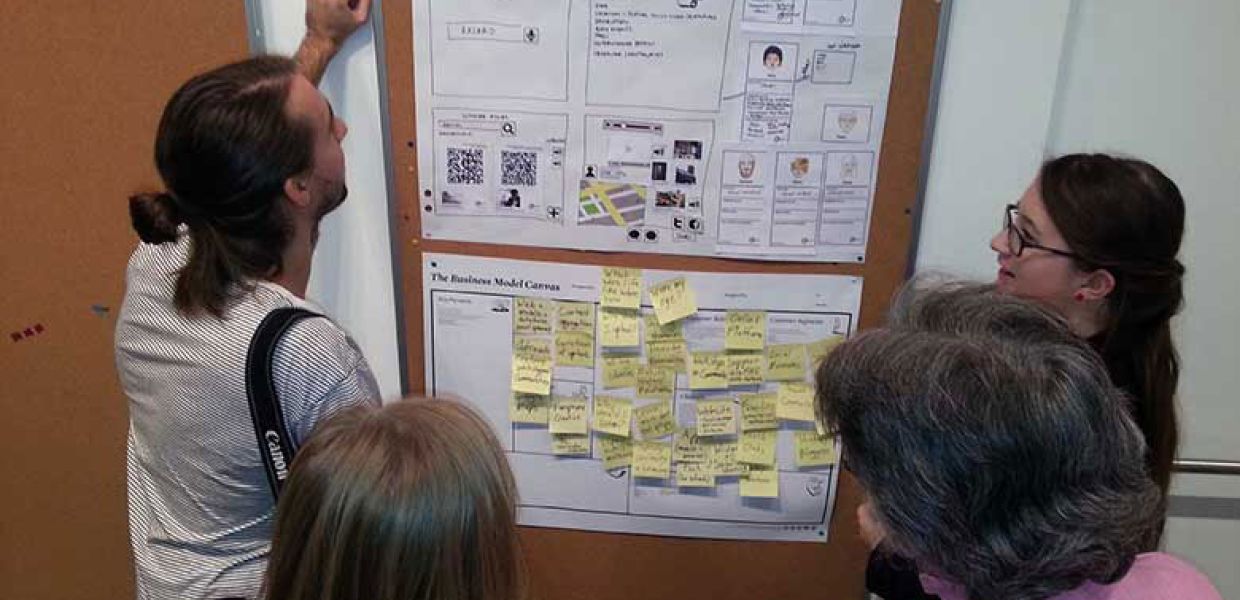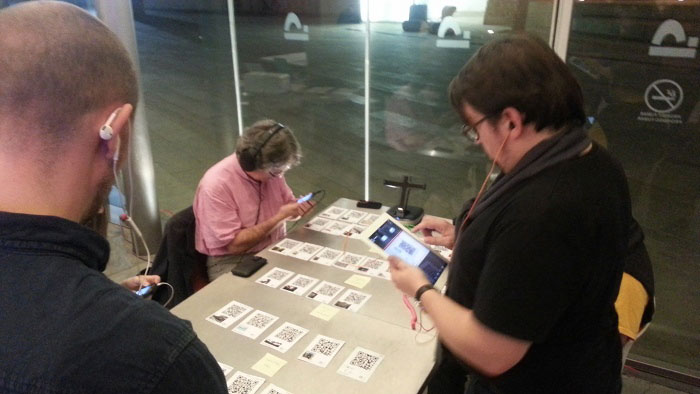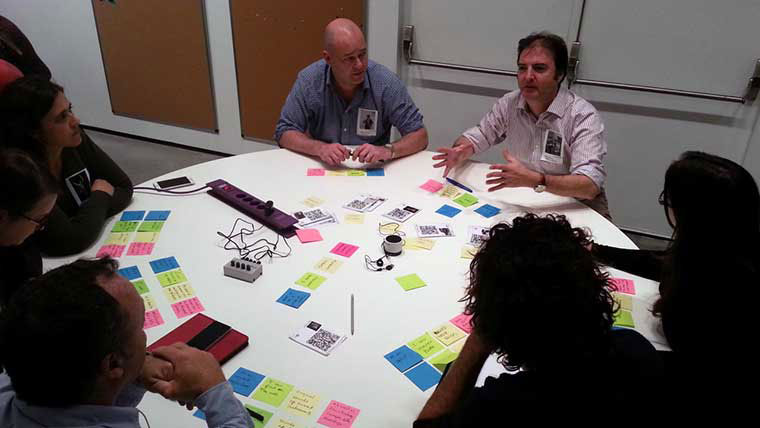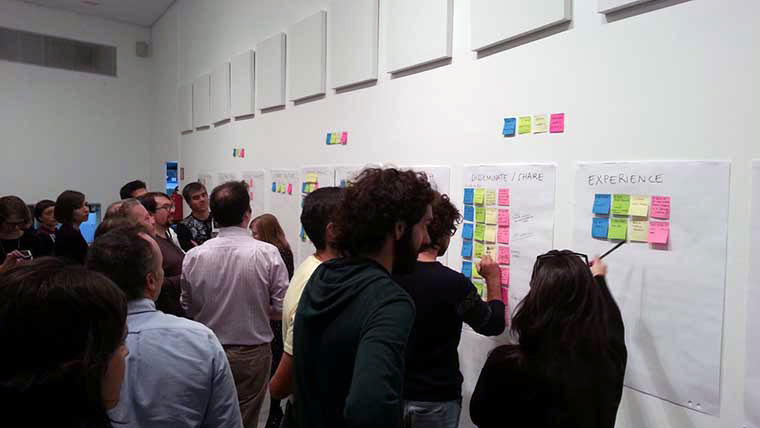Europeana Creative Workshop in Palma on Soundscapes and Social Networks

The curator of the “Retronaut” website believes that the images of the past that we find the most striking are those which are the most at odds with the ideas we have - those that challenge and disrupt our ideas of history.
Vivid colours in a photo taken 100 years ago can seem unreal even though the image is actually more realistic than the sepia version of the same print, but because we're used to seeing that era through a black and white lens, the colour shot seems incongruous and doesn't fit with our mental map - making it more interesting.
Sounds of the past can have a similarly disruptive effect. The world of 100 years ago was no more silent than it was black and white, but because it is only relatively recently that we've been able to capture and store sounds for posterity we're not all that used to thinking about what the past would have sounded like.
So while an image of Albert Einstein has a strong recognition factor, very few people would be able to recognise his voice were they to hear it. When people do hear a recording of the great scientist, the impression left can be novel and strong, the sonic dimension enriching our mental map bringing the past into the present in a more arresting way than silent imagery ever could do on its own.

The aim of the Europeana Creative workshop facilitated by Platoniq at Es Baluard Museum in Palma was to look at ways of delivering the sounds of cultural heritage and history to an audience in ways that are fresh and innovative. The workshop explored how to do this through social networks and their crowdsourcing possibilities, in order to inform and define upcoming work in the Social Networks pilot project.
Participants were asked to supply raw materials in the form of sound clips to help give focus to the discussion. These had to correspond to the following themes:
- street culture
- cultural heritage soundscapes
- speeches
- nature
- industry
Some of the sounds submitted were very basic, for example the patter of raindrops on the roof of a tent. However, even this simple sound can become interesting when a bit of context is added. A description tells us that it was recorded at a greenbelt protest, a timeline and map tell us when and where it was recorded, and, once a photo is added, these otherwise inert resources combine into something that depicts a piece of history that would otherwise have been unremarkable and quotidian.
Other samples included church bells, bees, landing jets, mating frogs, the hissing valves of a brewery and more. Over two and a half days of brainstorming, a slew of ideas began to emerge on how to organise and present these sounds. We moved from a collaborative "scenario forecast" of possible apps and platforms, to a discussion and selection process which ended up in five of these scenarios being more visually defined by participants, in the shape of collaged prototypes.

A proposed "listen to the city" project would take the idea of the audio guide common to galleries and museums onto the street. This concept would allow audio walking guides to be configured (wifi-connectivity permitting) for the individual traveller, and could enable city monuments to have sound effects or themed content connected to them.
Non-tourists would also be able to use such a service, the idea's proponents suggesting that themed soundscapes could be made available to commuters. For example, the daily train ride to work could be peppered with the industrial sounds of yesteryear as the train passes geographic points where factories used to operate, or on another day maybe a nature sound theme could be chosen.

As well as "listen to the city" there was the more abstract proposal of a "sound palette" - an app that would allow users to "draw in sound", linking clips together by drawing in different "colours" corresponding to themes.
We also discussed a "family stories" widget - an idea which would involve the mapping of recorded family interviews onto a family tree in a tool for the avid genealogical researcher present in every family.
Another idea was a portal for train geeks and fans to engage in challenges sourcing audiovisual and contextual information about rail transport. Fans could add geolocations and comments and could compare and share their findings.

The potential merits of a "search by sound" facility were given some attention, applications of it including a tune-finder, a bird-call identifier and a general facility for uncovering serendipitous similarities between arbitrary recordings.
Also up for discussion was the more ambitious possibility of a more creatively interactive tool which would allow users to compose sounds by juxtaposing things like industrial jack-hammer noises with recordings of 1930s propaganda speeches, or the combination of the sometimes eerily similar sounds of the natural world with the mechanical.
Many of the ideas proposed and discussed were interesting in their own right and could be used for the challenges that will start in 2014, although not all of them were viable. We measured viability in terms of technical feasibility, appeal and usability, potential business models, as well as the amount of content available to power them. Europeana has a limited number of sounds that are licensed for re-use, and while that number will grow as time goes on, as of yet these assets are too thematically diverse or too thinly distributed geographically for some of the more ambitious applications on the drawing board.
Nevertheless, this is a pilot project and a small-scale proof of concept will be delivered by next June based on the outputs of this workshop, with the participation of partners like Historypin, The British Library and The Netherlands Institute for Sound and Vision. To see what form that takes and to get a glimpse of how Europeana hopes to work with sound in the future, keep watching this space!
